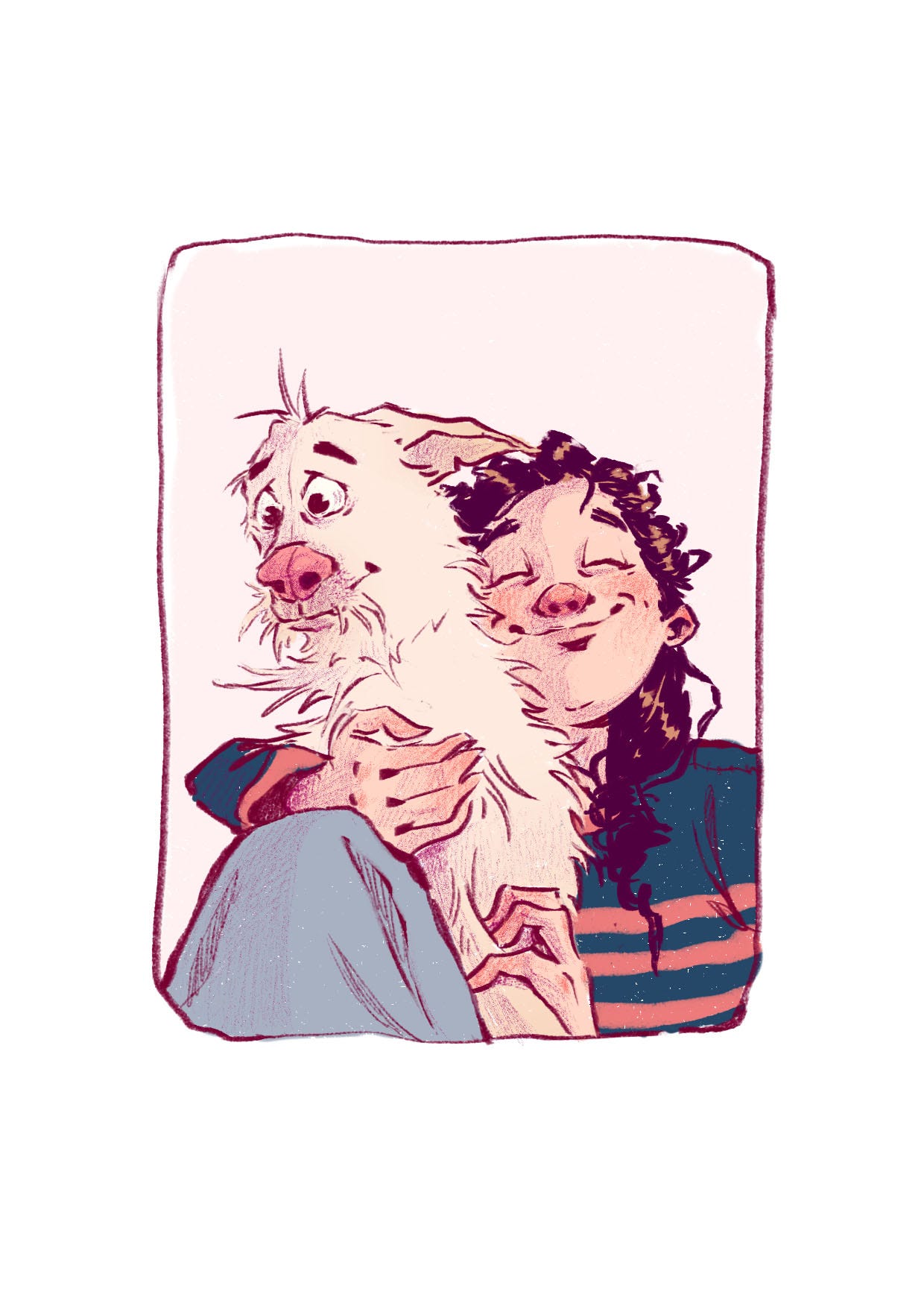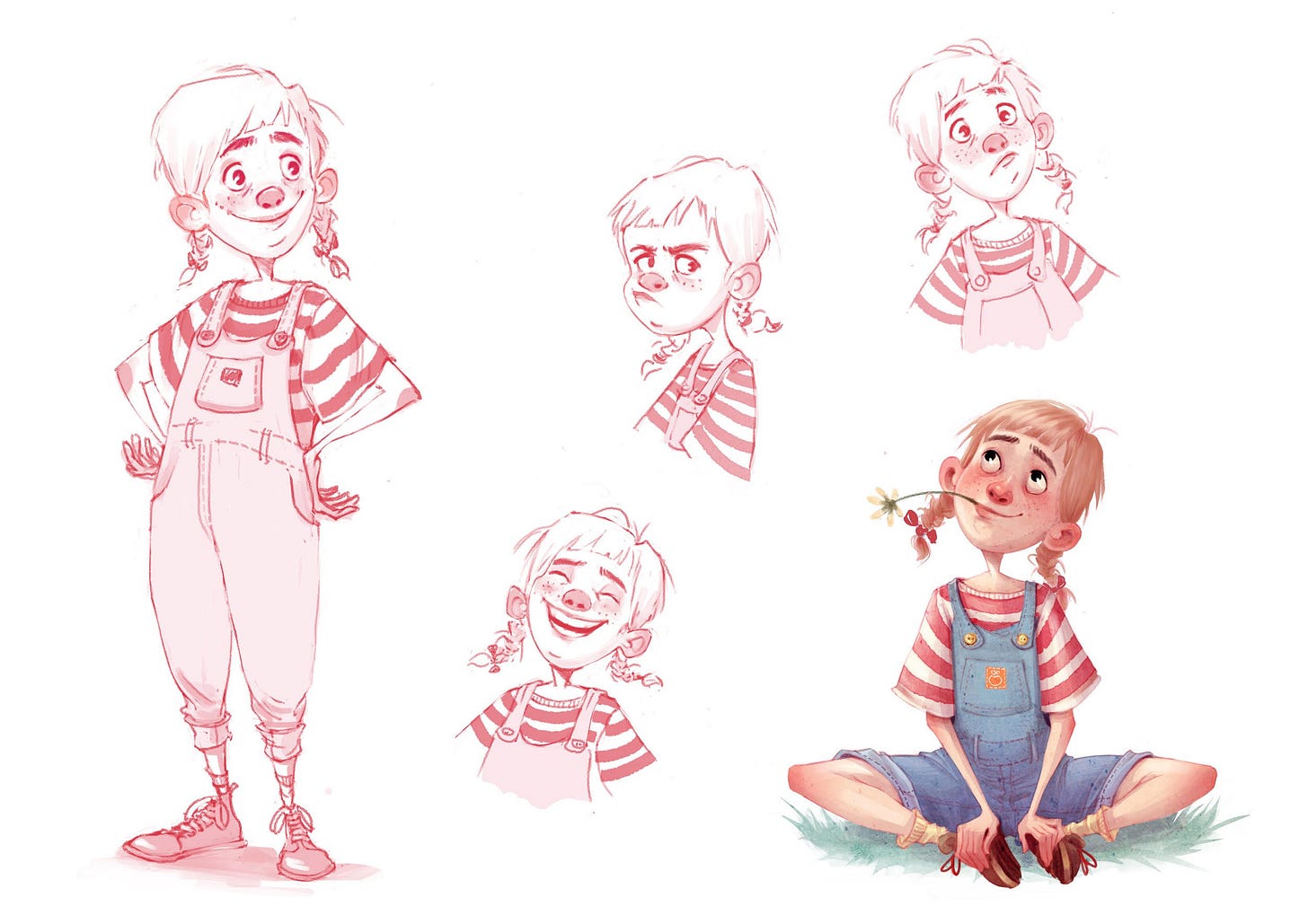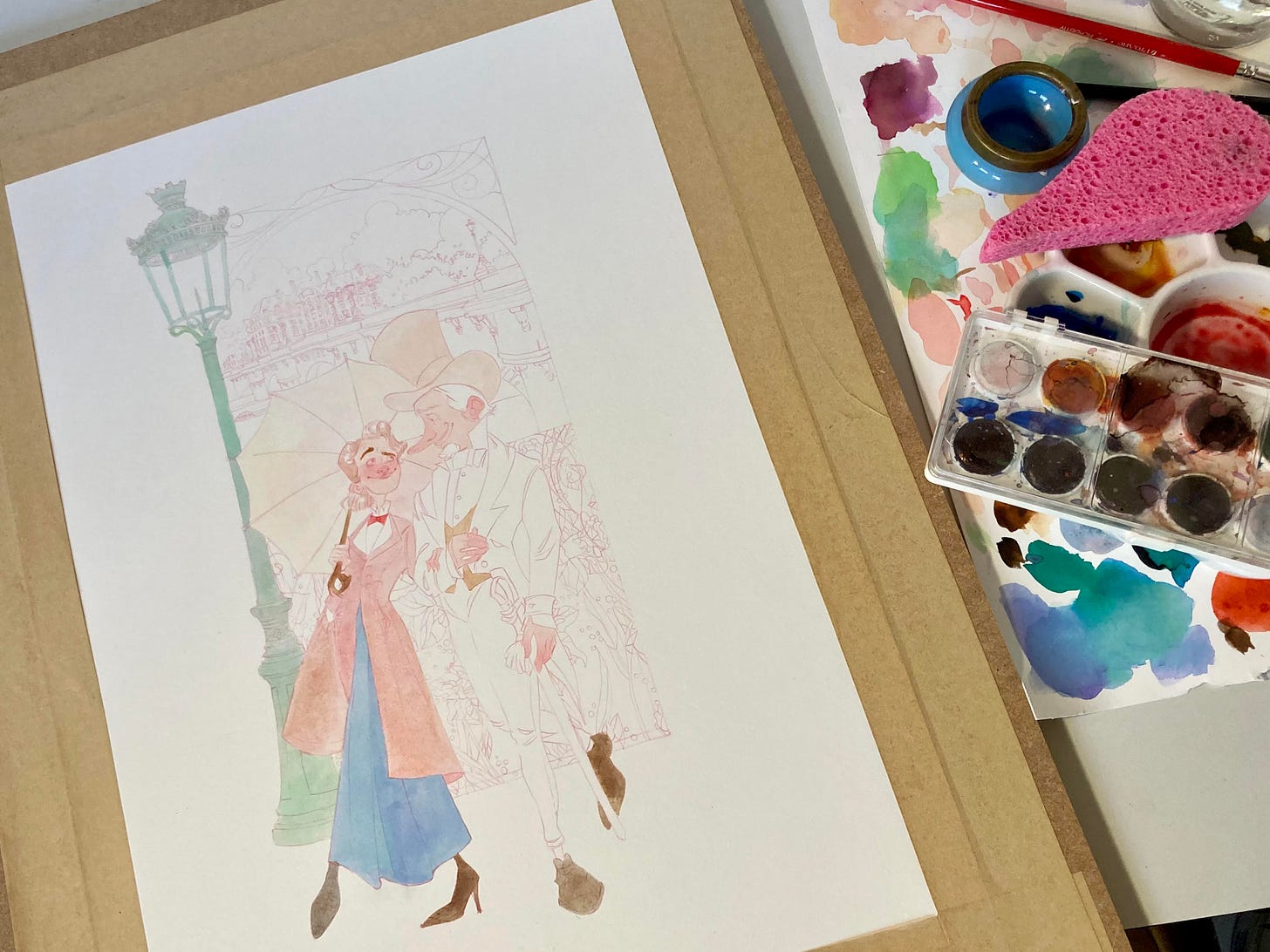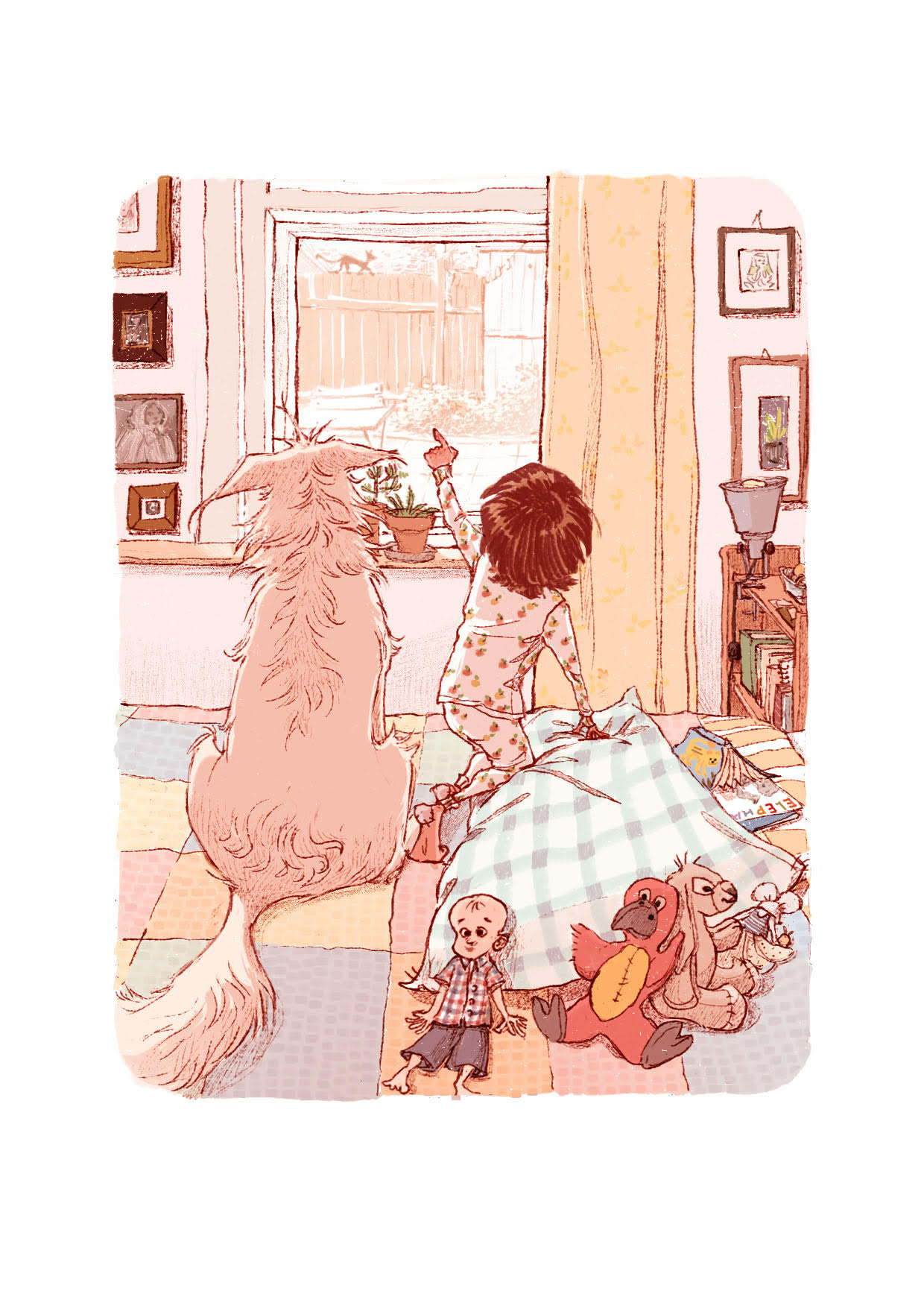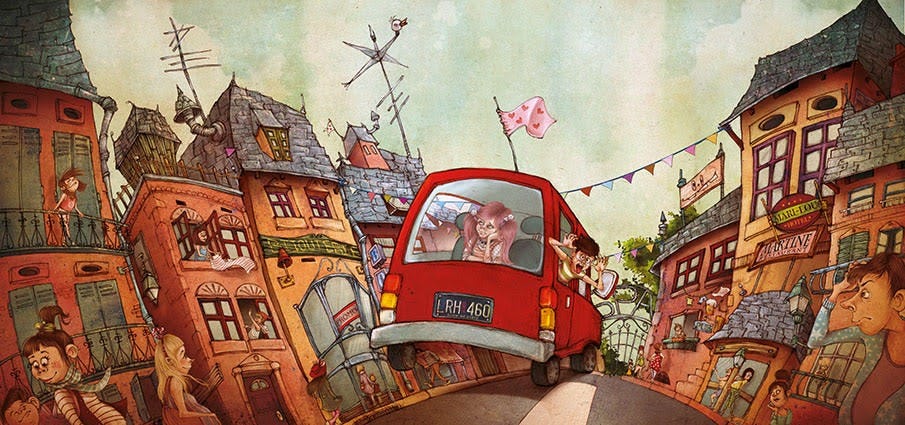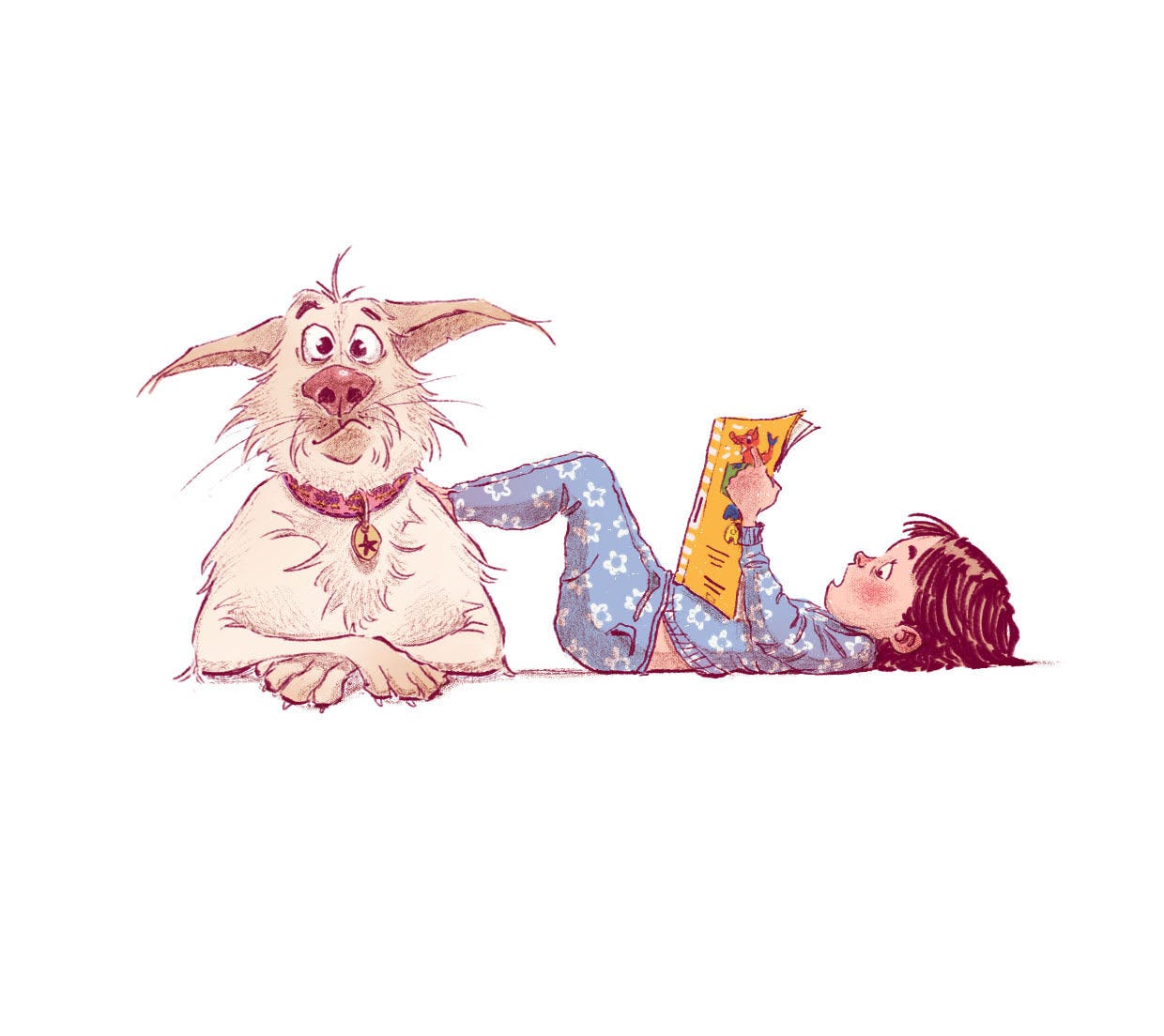Interview #35: The Art of Amandine Dugon
Amandine Dugon talks about her path in the children's book industry and shares useful insights
Hello art community!!! Today I’ll be talking about children's illustration with the amazing illustrator Amandine Dugon :))
For those just finding me - I’m Madalina, an artist and illustrator who loves discovering and talking to many fellow artists. I now share these conversations through monthly interviews available to read for everyone :)
Amandine Dugon is a French illustrator who now lives and works in her cozy apartment in East London. She has published several picture books, such as Un Baobab pour Lady Lily, worked on board games with Space Cowboys and Wizkids, and ran a small Etsy store. In addition to all these projects, she continues to draw fun and expressive personal characters and experiment with a variety of mediums.
☆ Hi Amandine and thank you for joining forArtists. How would you describe your artistic journey that led you to where you are today?
As far as I can remember I’ve always liked drawing and art in general. I was not really sure what I wanted to do after my secondary education but I knew it was going to be related to art in some capacity.
I remember thinking that I didn’t want drawing to become something I had to do and started studying history of art at university while drawing and painting on the side. After graduating, I figured it was time to learn how to draw and paint more professionally and joined L’École Pivaut in Nantes, France. I still had no idea what I was going to do once that was done, but I knew I wanted to somehow become someone who was drawing for living. When I had to choose a speciality after the first year, I discovered illustration and all the jobs related to it.
In the meantime my sister moved to the UK and I went to join her when I finished school. I came to London for 6 months and I’ve been here for nearly 15 years now! At first, in order to learn the language and adapt to the life here I worked in hospitality. I had a lot of fun, but one day I decided it was enough and I needed to go back to illustration and do something with it.
At the beginning I did some odd jobs mostly in graphic design and started sending my portfolio to publishers. After many portfolios sent to many publishers, I got a proposal for a book from a French editor. Despite the very very low remuneration, I was over the moon at the idea of being published. It's pretty much then that I started freelancing. My parents have never been people with 9-to-5 jobs, therefore the idea of working in an office never appealed to me. I was working as an illustrator during the day and in hospitality at night and I carried on like this for a while! It was quite intense but at least I was free to do what I liked for a living.
☆ Now that you have a daughter, how has your schedule changed? And how do you balance your freelance and personal life?
Now it's a bit different. I look after her most of the week (I love it and would not change anything!) and the time I have to work is precious. I used to be able to work anytime I wanted, be quite obsessive about it and spend a lot of time thinking rather than doing. I just can’t do that anymore.
Rather than being something negative it actually brought something new to my work, like an urgency that I really like!
☆ What do you think is the most challenging part of illustrating a book?
I would say the most challenging part is to create a good rhythm between all the illustrations in the book. One thing that my teachers taught me at school is that in order to create a good illustration you need to make choices and sacrifices.
You decide what people are going to see in your illustration. You direct the eyes where you want them to look.
In order to do that you can’t work on the main part of the illustration the same way you work on the background, otherwise there will be too much to see and they simply won’t see anything. In my opinion it’s the same with a book.
You can’t work on all the illustrations the same way. Some have to be more complex than others in order to create a good flow in the book.
☆ What are the main aspects you focus on when creating a new character?
When I create a character, I first give him/her a personality that I write down. I like imagining a life with a family, hobbies and all things that define an individual. I make a list of adjectives that will help me create the physical aspects of him/her.
For me, the most important thing is to work on expressions. That is what I love doing more than anything else, because it determines the personality of a character.
☆ Can you walk us through the traditional painting process of one of your characters?
I usually start with an idea and try to find the perfect reference for the pose. If I can’t find it, I will take a picture of myself or find a few references that will help me create the pose I need. I draw it either on paper or on computer if I want to be faster and then print and trace my drawing.
Next, I work with watercolors for the base and continue with colored pencils. I go back and forth between watercolors and pencils. I don’t like drawing with graphite pencils, I only draw with Prismacolor pencils (usually blue or red). As for watercolors I use a combination of different brands, but I especially like Rohrer and Klingner inks. And for the colored pencils I mainly use Polychromos from Faber-Castell.
☆ You work both digitally and traditionally. How do you preserve the traditional feeling in your digital art?
When I work in Photoshop, I either use a pencil brush I created myself or draw on paper and then scan the drawing to color it on the software.
☆ What are your main influences that helped shape your art style?
Studying art history has definitely shaped the way I approach drawing and painting. In art school I learned the classical way of painting. But now I also look at contemporary references to improve and diversify my illustrations and the way I treat color.
As for subjects, I love taking cues from events in my daily life life to create pictures, and I strongly believe that we draw best what we know best. These days it’s my daughter and my lunatic dog Penni!
☆ What advice would you give to beginner artists who struggle to create a cohesive portfolio since they love different subjects and techniques?
In my opinion, the most important thing is to make it clear to people what you do.
If you want to make children's books, show only children's illustrations in your portfolio. If there are too many options, because you want to show publishers that you are versatile, they might get confused.
☆ What projects are you currently working on?
At the moment I’m mostly working on children’s books. My own projects, as well as a collaboration with a friend of mine. It’s really exiting as it’s been a long time since I’ve worked in this industry.
☆ What people don't know about you, the person behind the art?
I have a twin sister who lives just a few doors down from my house! :D
☆☆ To learn more about Amandine's work you can visit her website and Instagram.





